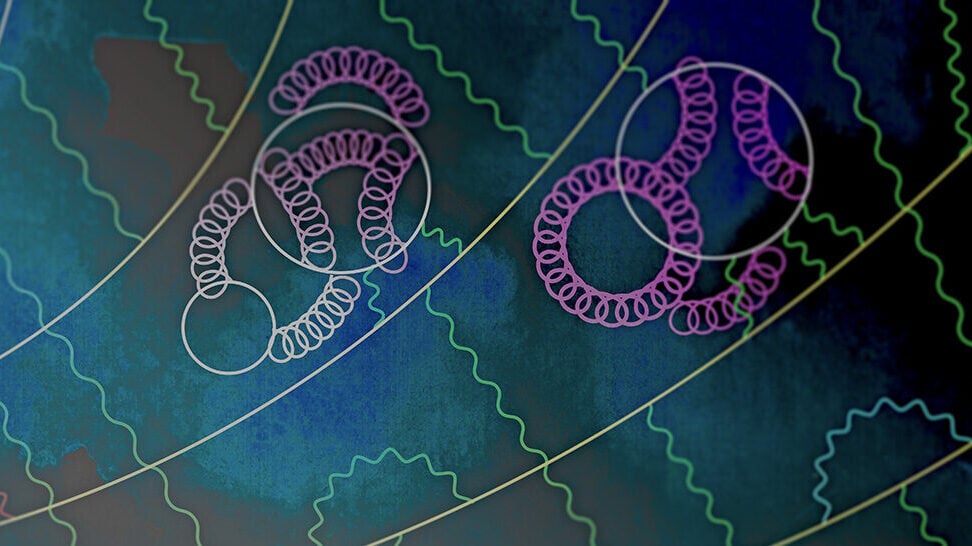This may be another nail in the coffin of the muon as a new physics phenomenon: A team of physicists who calculated the muon’s properties with great precision in simulations have found that the particle’s properties match the Standard Model better than previously thought.
This team is called BMW Collaboration. the study The paper is currently hosted on the preprint server arXiv and has not yet been published in a peer-reviewed journal. Published in Nature 2021“Weakening[ed] “They have resolved a long-standing gap between experiment and theory.” In other words, their work has brought experimental physics closer to theoretical predictions when it comes to understanding the muon.
In the new paper, the team performed large-scale lattice quantum chromodynamics (QCD) simulations on a finer lattice than in their previous study, resulting in more accurate calculations. Essentially, the team took QCD as input, placed a grid in space-time, and ran a simulation. The results predicted the muon’s anomalous magnetic moment, and it deviated from the experimental average in measuring its properties by just 0.9 standard deviations.
Muons and the Standard Model
The muon is an elementary particle with a mass about 207 times that of the electron. For about 20 years, scientists have thought that the muon could be a site of discovery in new physics. The problem lies in measuring the particle’s anomalous magnetic moment, or g-2, a property that describes the quantum mechanical contribution to the particle’s wobble in the presence of a magnetic field. The muon’s G-2 is Standard Model of Particle Physicsa set of fundamental theories that have underpinned physics for the past 50 years.
Unlike larger experiments that measure g-2 through particle collisions, the team’s work “doesn’t require any experimental input, it just requires the activation of the fundamental theory, QCD,” Zoltan Fodor, a theoretical particle physicist at the University of California, San Diego and co-author of the study, said in a phone interview with Gizmodo. “In the end, you get exactly what you see in the numbers today, which is a perfect match with the experimental results.”
In other words, the team’s findings suggest that the apparent gap between the muon’s predicted anomalous magnetic moment and that predicted by the Standard Model is not as large as previous studies have suggested.
Key experimental results suggest new physics
The muon’s anomalous magnetic moment was first measured at CERN in the 1960s, but the measurements were inaccurate. In 2006, the E821 experiment at Brookhaven National Laboratory Final measurement of muon g-2differs from the standard model prediction by more than two standard deviations, More than 3 standard deviations After further calculations.
“It’s not that easy to explain the muon’s g-2 with new physics,” Andreas Clivelin, a theoretical physicist at the University of Zurich and the Paul Scherrer Institute, told Gizmodo in a phone interview. “It’s not something that just comes naturally. Rather, you have to work hard to find a model that gives you a pretty large effect.”
The statistical milestone at which physicists believe a true discovery has been made is five standard deviations, or “five sigma,” indicating that the probability of a result occurring by chance under the Standard Model is extremely small.
In 2021, the Muon G-2 Collaboration announced a measurement of the muon’s magnetic moment that differs from the Standard Model by 4.2 standard deviations. Since the Brookhaven result, the difference in numbers has widened. But last year, CMD-3 experiment resultsWith the help of Russian accelerator manufacturers, the discrepancy in the figures appears to have been narrowed. Depending on how you look at it, that’s two steps forward and one step back.
“Both the first-principles calculations from the lattice and the CMD-3 measurements are in agreement, and neither suggests any new physics,” Cliverin said. “I don’t have high expectations that we’ll actually have any sizeable new physics effects in the muon’s g-2.”
Where does this leave us?
There are other ways to probe the properties of muons. In 2022, Gizmodo spoke to several physicists The next big breakthrough in particle physics Maybe, given that it’s been relatively quiet since the observation of the Higgs boson in 2012. One physicist suggested the muon collider: “If we have problems with muons, let’s use muons to find out,” they said.
Last week, another research team Published Analysis of the muon beam experiments could pave the way for future muon colliders, but building a new collider can be expensive and time-consuming.
For existing experiments, more data is always useful, and retesting previous results with more precise methods may be able to show whether the Standard Model still holds. The muon g-2 experiment at Fermi National Accelerator Laboratory is Final result Next year. If the results so far are any indication, next year’s numbers will be another data point in the muon’s story, not the final chapter.


